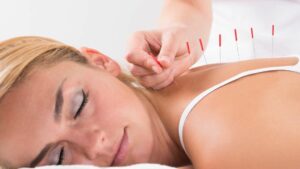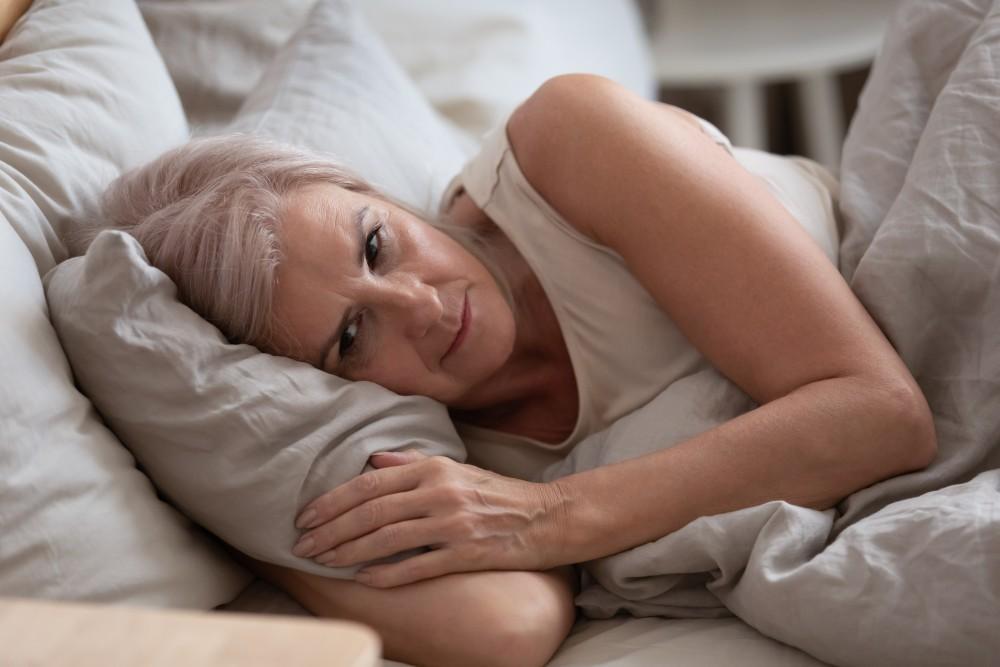Menopause is a natural and inevitable stage in a woman’s life that marks the end of her reproductive years. While this transition is a normal part of aging, it brings about various hormonal changes that can result in a range of symptoms, including hot flashes, mood swings, and excessive sweating. Excessive sweating, also known as hyperhidrosis, can be particularly challenging for women going through menopause. In this blog, we will explore the causes of excessive sweating during menopause and discuss effective treatment options to manage this common symptom.
Contents
Is Excessive Sweating Common in Menopause?

Yes, excessive sweating is a common symptom during menopause. The hormonal changes that occur as a woman transitions into menopause can lead to a range of physical and emotional symptoms, and excessive sweating is one of them. The primary hormone involved in menopause is estrogen, and its decline can affect the body’s thermoregulation, leading to sudden and intense episodes of sweating known as hot flashes.
- Hot flashes are a hallmark symptom of menopause and are experienced by a significant number of women.
- They can occur both during the day and at night, disrupting sleep and daily activities.
- Hot flashes often include not only an increase in body temperature but also sweating, particularly in the upper body, face, and neck.
The exact cause of hot flashes and excessive sweating during menopause is not fully understood, but it is believed to be related to the hormonal changes that accompany the transition.
- Fluctuations in estrogen levels impact the hypothalamus, the part of the brain that regulates body temperature.
- As a result, the body may perceive changes in temperature and initiate responses such as sweating to cool down.
It’s important to note that the severity and frequency of excessive sweating can vary among women going through menopause. While some may experience mild symptoms that are easily managed, others may find the sweating to be more intense and disruptive to their daily lives.
Different Excessive Sweating in Menopause Treatment Options
This phenomenon is often associated with hormonal changes, particularly the decrease in estrogen levels. Here are different treatment options for managing excessive sweating during menopause:
1. Hormone Replacement Therapy (HRT)

Hormone Replacement Therapy (HRT) is a medical intervention commonly used to manage various symptoms of menopause, including excessive sweating. During menopause, there is a significant decline in estrogen levels, leading to hormonal imbalances that contribute to symptoms such as hot flashes and night sweats.
HRT involves supplementing the body with hormones, typically estrogen alone or a combination of estrogen and progestin (for women with an intact uterus). By replenishing estrogen levels, HRT helps regulate the body’s thermoregulation processes, reducing the frequency and intensity of hot flashes and excessive sweating.
Pros:
- Comprehensive Symptom Management: HRT is effective in addressing multiple menopausal symptoms, including excessive sweating, hot flashes, mood swings, and vaginal dryness.
- Customizable Approaches: HRT can be tailored to an individual’s specific needs, with different formulations and delivery methods available, such as pills, patches, creams, or gels.
Cons:
- Potential Risks: Long-term use of HRT has been associated with certain health risks, including an increased risk of blood clots, stroke, and breast cancer. The decision to use HRT should be made after careful consideration of an individual’s overall health and risk factors.
- Side Effects: Some women may experience side effects such as breast tenderness, nausea, or bloating when undergoing HRT.
2. Prescription Medications
Prescription medications are another avenue for managing excessive sweating during menopause. Various drugs, such as antiperspirants containing aluminum chloride hexahydrate, anticholinergic drugs, and selective serotonin reuptake inhibitors (SSRIs), may be prescribed based on the severity of symptoms.
- Antiperspirants: Aluminum chloride hexahydrate is a common ingredient in prescription-strength antiperspirants. These products work by plugging sweat ducts, reducing the amount of sweat that reaches the skin’s surface.
- Anticholinergic Drugs: Medications like glycopyrrolate can help control excessive sweating by blocking certain nerve signals that stimulate sweat glands.
- SSRIs: Selective serotonin reuptake inhibitors, commonly used as antidepressants, may also be prescribed to manage hot flashes and sweating. While their primary function is not related to sweating, they can help alleviate symptoms in some cases.
Pros:
- Targeted Treatment: Prescription medications offer targeted approaches to managing excessive sweating by addressing specific physiological mechanisms.
Cons:
- Potential Side Effects: Prescription medications may have side effects, ranging from mild to severe, depending on the drug. It’s crucial to discuss potential risks and benefits with a healthcare professional.
3. Lifestyle Modifications

Simple lifestyle changes can go a long way in managing excessive sweating during menopause. These modifications are easy to implement and contribute to overall well-being.
- Dress in Layers: Wearing lightweight, breathable fabrics in layers allows for easy adjustment to temperature changes, minimizing discomfort associated with sudden hot flashes.
- Hydration: Staying well-hydrated helps regulate body temperature and can contribute to a reduction in sweating. Drinking water throughout the day is essential for overall health.
- Dietary Changes: Avoiding triggers such as spicy foods, caffeine, and alcohol can help minimize the occurrence of hot flashes and sweating.
Pros:
- Low-Cost and Low-Risk: Lifestyle modifications are generally low-cost and low-risk, making them accessible to most individuals.
Cons:
- Effectiveness May Vary: While lifestyle changes can be beneficial, their effectiveness in managing excessive sweating can vary from person to person.
4. Natural Remedies
Some women prefer natural remedies to manage menopausal symptoms, including excessive sweating. While the scientific evidence supporting the effectiveness of these remedies may vary, some have shown promise in alleviating symptoms.
- Herbal Supplements: Black cohosh and other herbal supplements are believed to have estrogen-like effects that may help regulate hormonal imbalances.
- Mind-Body Techniques: Practices such as acupuncture, yoga, and meditation can contribute to stress reduction, potentially minimizing the frequency and intensity of hot flashes and sweating.
- Cooling Techniques: Using fans, cool compresses, or taking cool showers can provide relief during episodes of excessive sweating.
Pros:
- Holistic Approach: Natural remedies often take a holistic approach to symptom management, addressing both physical and mental well-being.
Cons:
- Variable Effectiveness: The effectiveness of natural remedies can vary, and individual responses may differ.
5. Botox Injections
Botulinum toxin injections, commonly known as Botox, have shown promise in treating excessive sweating, particularly in the underarm area. While not a first-line treatment for menopausal symptoms, it may be considered when other options have not provided sufficient relief.
- Mechanism of Action: Botox injections work by blocking nerve signals that stimulate sweat glands, reducing the production of sweat in the treated area.
Pros:
- Localized Treatment: Botox injections provide a localized treatment for excessive sweating and can be effective in specific areas of concern.
- Long-Lasting Results: The effects of Botox injections can last for several months, reducing the frequency of treatments.
Cons:
- Repetitive Procedure: Botox injections are not a one-time solution and require repeated treatments to maintain their effectiveness.
- Potential Side Effects: While generally safe, Botox injections can have side effects, including pain at the injection site, temporary muscle weakness, or allergic reactions.
6. Cognitive-behavioral therapy (CBT)
Cognitive-behavioral therapy (CBT) is a psychological intervention that focuses on identifying and changing thought patterns and behaviors contributing to excessive sweating and related symptoms. While not a direct physiological treatment, CBT can help women cope with the emotional aspects of menopausal symptoms.
- Stress Reduction: CBT can teach women effective stress management techniques, helping reduce the frequency and intensity of hot flashes and sweating triggered by emotional stress.
- Coping Strategies: By providing coping strategies and cognitive reframing, CBT can empower women to navigate the challenges of menopause, improving their overall quality of life.
Pros:
- Non-Pharmacological: CBT is a non-pharmacological approach, making it suitable for individuals who prefer psychological interventions over medications.
- Holistic Well-Being: CBT addresses the psychological aspects of menopausal symptoms, contributing to holistic well-being.
Cons:
- Time-Intensive: CBT may require multiple sessions over time, and its effectiveness can be influenced by individual commitment and engagement.
7. Acupuncture

Acupuncture is an ancient Chinese practice that involves inserting thin needles into specific points on the body to stimulate energy flow. While its mechanisms are not fully understood, some women find relief from menopausal symptoms, including excessive sweating, through acupuncture.
- Regulation of Energy Flow: Acupuncture is believed to regulate the flow of energy, or Qi, in the body, addressing imbalances that may contribute to symptoms.
- Stress Reduction: Acupuncture sessions may promote relaxation and stress reduction, potentially minimizing the occurrence of hot flashes and sweating.
Pros:
- Low Risk of Side Effects: Acupuncture is generally considered safe, with minimal risk of side effects when performed by a trained practitioner.
- Holistic Approach: Similar to other alternative therapies, acupuncture takes a holistic approach to well-being.
Cons:
- Variable Effectiveness: Individual responses to acupuncture may vary, and its effectiveness in managing menopausal symptoms is not universally established.
8. Biofeedback
Biofeedback is a technique that involves monitoring physiological functions and providing real-time feedback to help individuals gain control over involuntary bodily processes, such as sweating.
- Self-Regulation: Biofeedback teaches individuals to consciously control physiological responses, including sweating, by providing feedback on changes in skin temperature, heart rate, or muscle tension.
- Empowerment: Learning self-regulation techniques through biofeedback can empower women to manage excessive sweating independently.
Pros:
- Non-Invasive: Biofeedback is a non-invasive method that does not involve medications or surgical procedures.
- Skill Acquisition: Individuals can acquire skills during biofeedback training that may have long-term benefits in managing menopausal symptoms.
Cons:
- Availability: Biofeedback may not be widely available in all locations, and access to trained practitioners can be limited.
9. Lifestyle and Dietary Supplements
Certain lifestyle changes and dietary supplements have gained attention for their potential in managing menopausal symptoms, including excessive sweating.
- Regular Exercise: Engaging in regular physical activity can help regulate hormones, improve mood, and contribute to overall well-being, potentially reducing the severity of menopausal symptoms.
- Dietary Supplements: Some women find relief through dietary supplements such as vitamin E, omega-3 fatty acids, and phytoestrogens found in soy products. However, the evidence supporting their efficacy is not consistent.
Pros:
- Holistic Health Benefits: Adopting a healthy lifestyle and incorporating dietary supplements can offer broader health benefits beyond managing menopausal symptoms.
Cons:
- Variable Results: The effectiveness of lifestyle changes and dietary supplements can vary among individuals, and not all women may experience significant relief.
How To Get Excessive Sweating in Menopause Treatment?
While it’s important to note that treatment for excessive sweating during menopause often requires consultation with healthcare professionals, here are six online websites where individuals can find information, resources, and potential products to aid in the management of symptoms:
- HerMantra – Menopause Section: HerMantra provides reliable medical information on menopause, including symptoms, causes, and treatment options. It’s a valuable resource for understanding the underlying factors contributing to excessive sweating during menopause.
- WebMD – Menopause Health Center: WebMD offers a comprehensive Menopause Health Center with articles, expert advice, and community forums. Visitors can find information on various menopausal symptoms, including excessive sweating, and explore treatment options.
- North American Menopause Society (NAMS): NAMS is a nonprofit organization dedicated to promoting the health and quality of life of women during midlife and beyond. Their website provides educational resources, research updates, and information on menopausal symptom management.
- Healthline – Menopause Section: Healthline’s Menopause section offers articles written by medical professionals, covering a range of topics related to menopause, including symptom management and treatment options.
- The North American Menopause Society (NAMS) – Find a Provider: NAMS provides a “Find a Menopause Practitioner” tool on its website, allowing individuals to locate healthcare professionals specializing in menopausal care. This can be helpful for those seeking personalized treatment advice.
Conclusion
Excessive sweating during menopause can be a challenging symptom, but there are various treatment options available. The choice of treatment should be based on individual preferences, overall health, and the severity of symptoms. Consulting with a healthcare professional is crucial to determine the most suitable approach for managing excessive sweating and ensuring a smoother transition through the menopausal stage. Remember, effective management of symptoms can significantly improve the quality of life during this natural phase of a woman’s life.
If you are facing menopause-related issues, menopause treatment at HerMantra can help. Book your free trial online menopause treatment session now.


